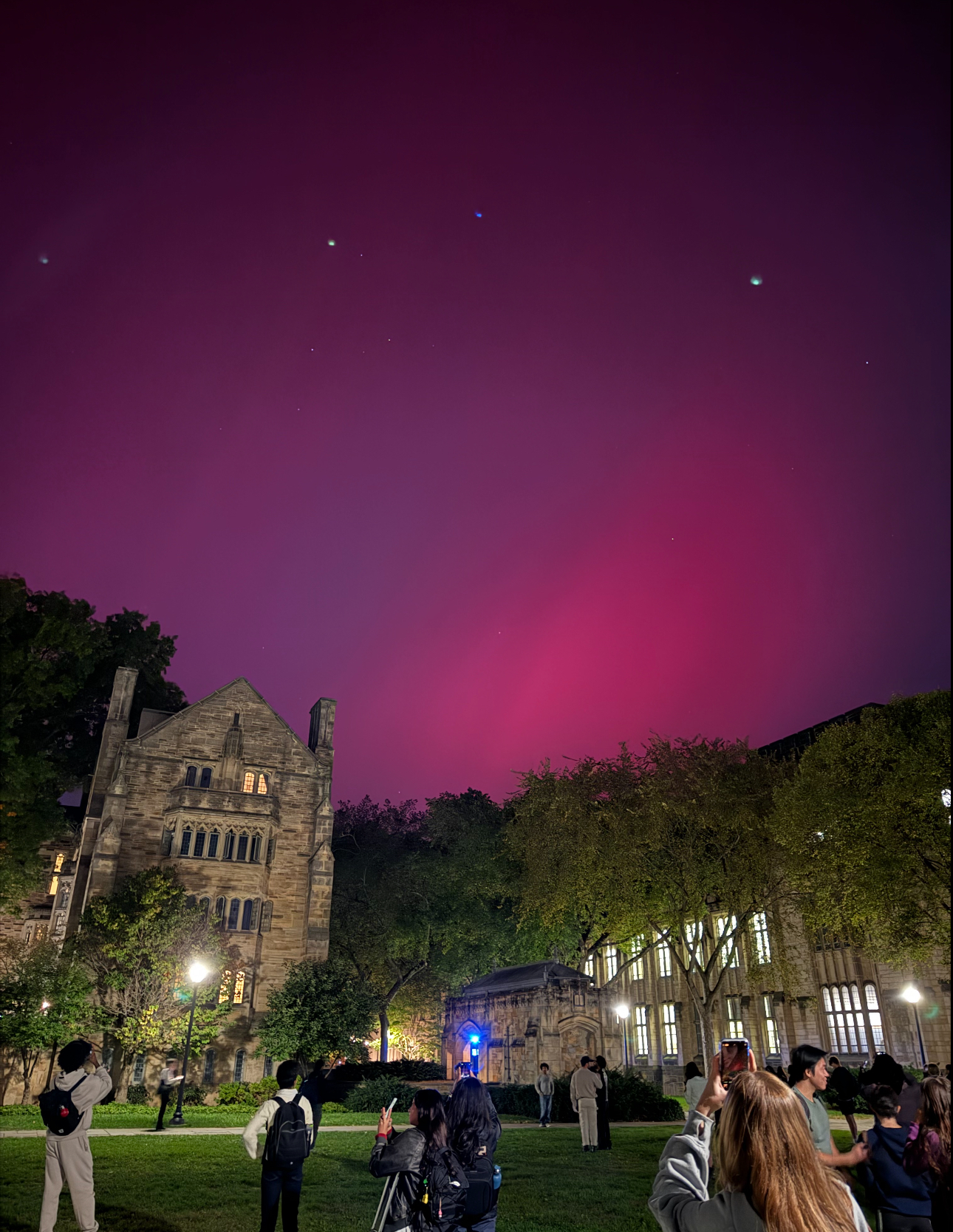Northern Lights illuminate New Haven night sky
Last Thursday, students gathered on campus to see a display of the Northern Lights, or aurora borealis.

Courtesy of Diego Miura
Last Thursday night, students gathered on Cross Campus and in college courtyards to gaze at the Northern Lights that illuminated the New Haven sky.
Shades of violet, green and red were faintly visible to the naked eye but were more defined through cameras on high exposure. Sightings of the phenomenon, also known as the aurora borealis or aurorae, spread quickly across social media, student group chats and by word of mouth.
The Northern Lights varied in visibility for different people throughout the night.
“We were in a place with a bunch of streetlights and trees, so it was hard to figure out how to see them, but eventually we saw a sort of dark red glow,” Aaron Mesa ’25 said.
Mesa mentioned that while most space phenomena appear more impressive in-person than in photos, the Northern Lights were primarily visible in photos they took.
Diego Miura ’27 was surprised by how visible the lights were. He was sitting in his common room when one of his suitemates looked outside and noticed that the sky was red. The group quickly ran to Cross Campus.
“Everyone had their phones pointed up, and people couldn’t believe what they were seeing,” Miura stated. “I’ve always been told that our eyes usually don’t see anywhere near what a camera sees, but I was genuinely surprised by how colorful and vibrant they were.”
According to Astronomy Professor Sarbani Basu, the presence of the Northern Lights can be attributed to charged particles from the sun entering Earth’s atmosphere through the magnetic poles and interacting with gas molecules. The particles energize gas molecules, which give up extra energy as light.
Astronomy Lecturer and Director of the Leitner Family Observatory and Planetarium Michael Faison likened the energized gas molecules in aurorae to a “phosphor screen or an old-style CRT television.”
“In the extreme north and south, close to the earth’s magnetic poles, aurorae can be seen regularly because the normal wind from the sun is enough,” Basu said. “However, what we are seeing is different. [The sun] is almost at the peak of the current solar magnetic cycle.”
While the Earth’s magnetic field usually deflects these charged particles, solar flares can sometimes cause a large cloud of charged particles, known as “coronal mass ejections,” Faison explained. The coronal mass ejections can overwhelm the Earth’s magnetic field, causing particles to flow along the magnetic field lines and collide with the atmosphere, primarily at the north and south magnetic poles.
According to Faison, in the case of last Thursday’s light show, an especially strong geomagnetic storm caused by a coronal mass ejection pushed the Northern Lights farther south.
For many, including Miura, witnessing the Northern Lights was an awe-inspiring experience.
“I was at a loss for words,” Miura said. “I’ve tried to catch the Northern Lights for the longest time, and I even went to Iceland in search of them, but it ended up being Connecticut where I caught them.”
According to Basu, the Northern Lights cannot currently be predicted, though solar physicists are working on it.
Seeing the Northern Lights has changed some students’ relationships with astronomy and night-sky observation.
“I work with astronomical data all the time as part of my classes and research; it can be too easy to get lost in calculations and deadlines and forget how cool it is to study these objects,” Isaac Moskowitz ’25, an astrophysics major, noted. “Seeing the aurora reminded me of why I started studying astronomy in the first place.”
The Northern Lights were spotted in New Haven in May earlier this year.







